Chinese desserts offer a delightful mix of flavors and textures that differ from Western sweets. These treats often use ingredients like rice, beans, and fruits to create unique and tasty endings to meals.
You’ll find options ranging from light and refreshing to rich and indulgent.
Chinese desserts can be enjoyed year-round, but some are tied to specific holidays or seasons. For example, mooncakes are eaten during the Mid-Autumn Festival, while tangyuan (sweet rice balls) are popular during the Lantern Festival.
Many of these desserts have deep cultural roots and carry special meanings in Chinese traditions.
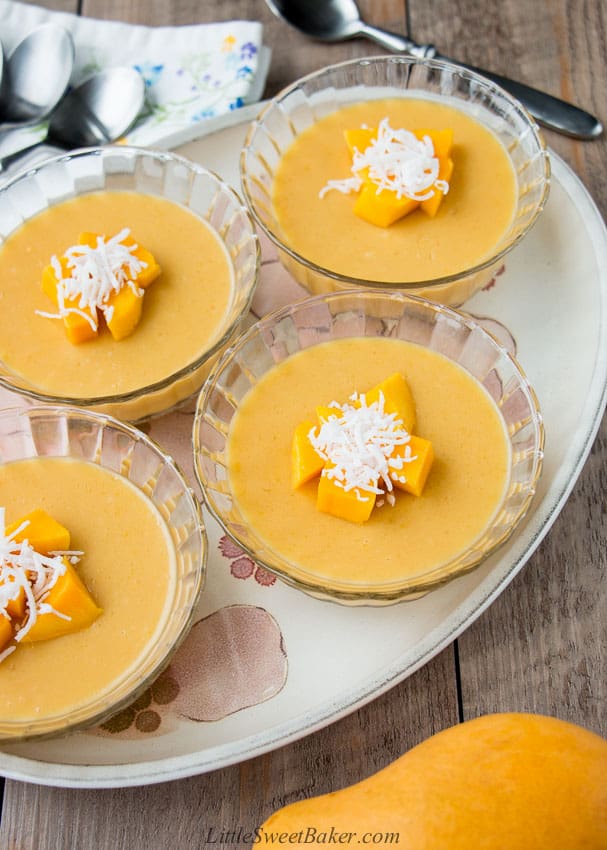
1. Mango Pudding
Mango pudding is a beloved Chinese dessert that’s perfect for hot summer days. You’ll love its refreshing taste and silky texture.
This dessert uses just a few simple ingredients. Fresh mango is the star, giving it a naturally sweet flavor.
Gelatin helps create the smooth, pudding-like consistency.
You can easily make mango pudding at home. Simply blend mango with sugar, milk, and gelatin.
Pour the mixture into serving bowls and chill for a few hours.
For an extra special touch, top your pudding with some evaporated milk before serving. You can also add fresh mango pieces as a garnish.
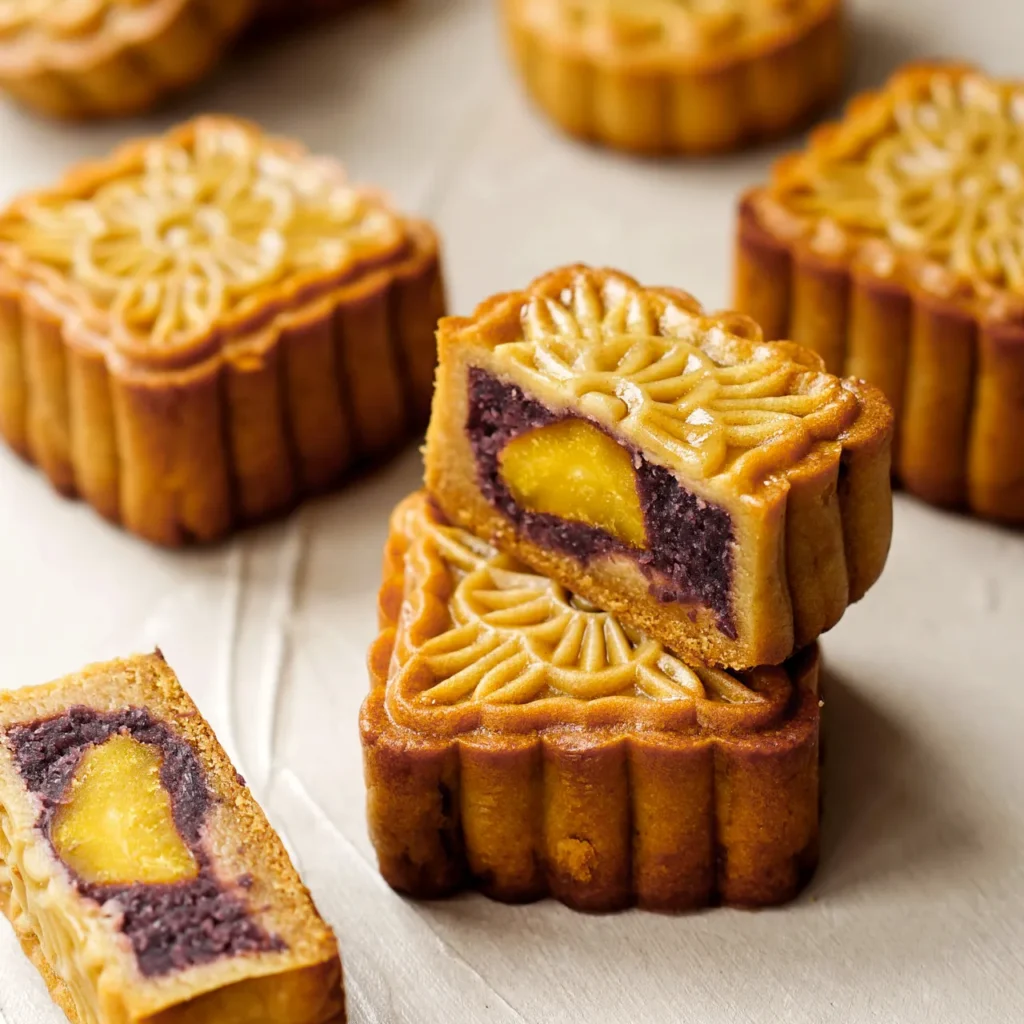
2. Mooncake
Mooncakes are a beloved Chinese dessert enjoyed during the Mid-Autumn Festival. These round pastries symbolize family reunion and fullness.
You’ll find mooncakes filled with various sweet pastes like lotus seed, red bean, or mixed nuts. Many also contain salted egg yolks in the center.
The pastry crust is made with golden syrup, flour, oil, and lye water. This gives mooncakes their signature golden-brown color when baked.
To make mooncakes at home, you’ll need special molds to shape the pastry and create decorative patterns on top. While they take some effort to prepare, the results are worth it.
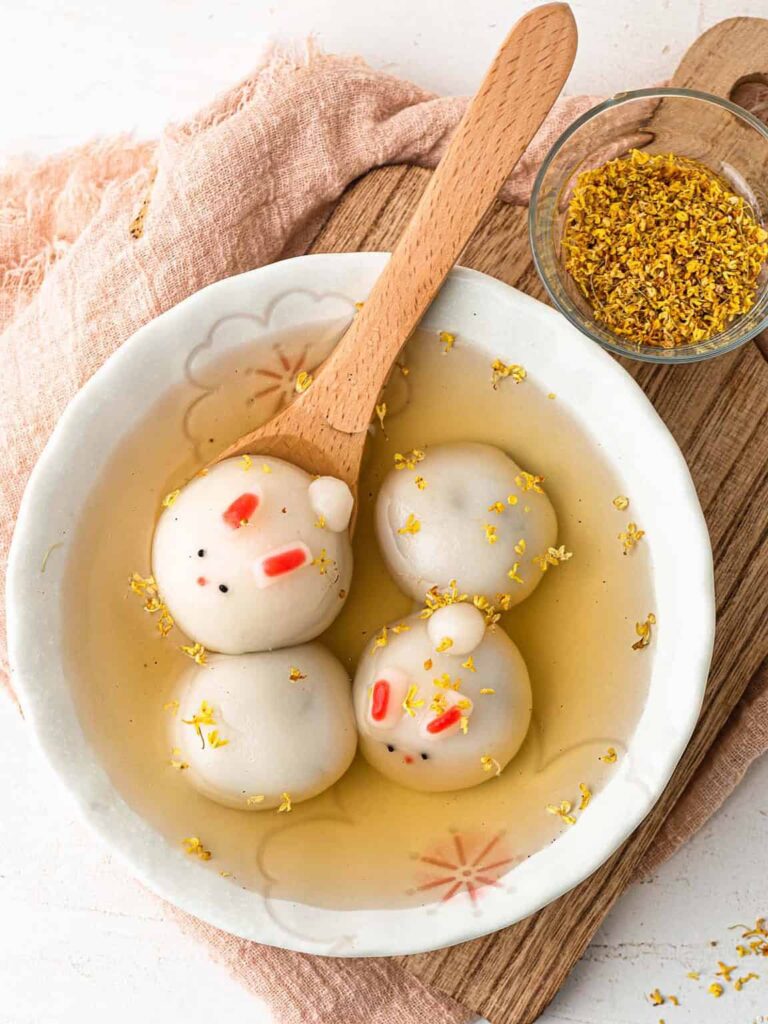
3. Tangyuan
Tangyuan is a beloved Chinese dessert made from glutinous rice flour. These small, chewy balls come in various sizes and can be plain or filled with sweet ingredients.
Popular fillings include black sesame, peanut, and red bean paste. You’ll often find tangyuan served in a warm, sweet soup or broth.
This treat is especially common during festivals and special occasions. It symbolizes family unity and completeness due to its round shape.
To make tangyuan at home, you can mix glutinous rice flour with water to form a dough. Then shape it into balls and cook them in boiling water.
Serve with a ginger syrup for a traditional touch.
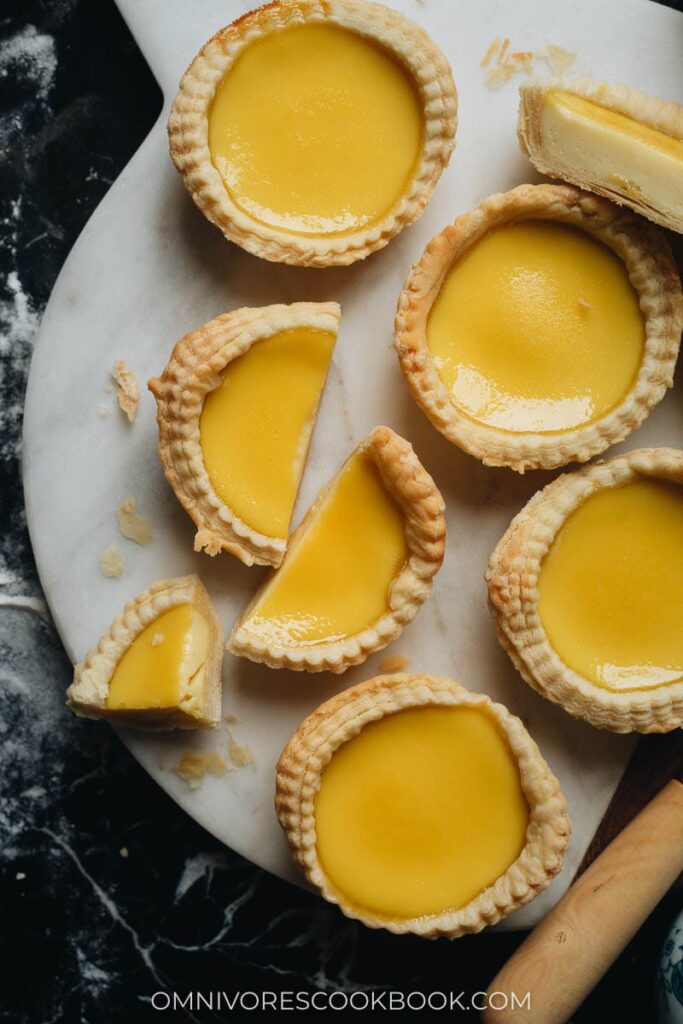
4. Egg Tart
Egg tarts are a beloved Chinese dessert with a crispy pastry shell and smooth egg custard filling. You’ll often find them at dim sum restaurants or bakeries.
The pastry can be made with either a shortcrust or flaky puff pastry. The filling is a simple mix of eggs, milk, and sugar.
To make egg tarts at home, you can use store-bought puff pastry to save time. Fill the pastry shells with the custard mixture and bake until the filling is set and the crust is golden brown.
These little tarts have a rich, creamy texture and a gentle sweetness. They’re best enjoyed warm, fresh from the oven.
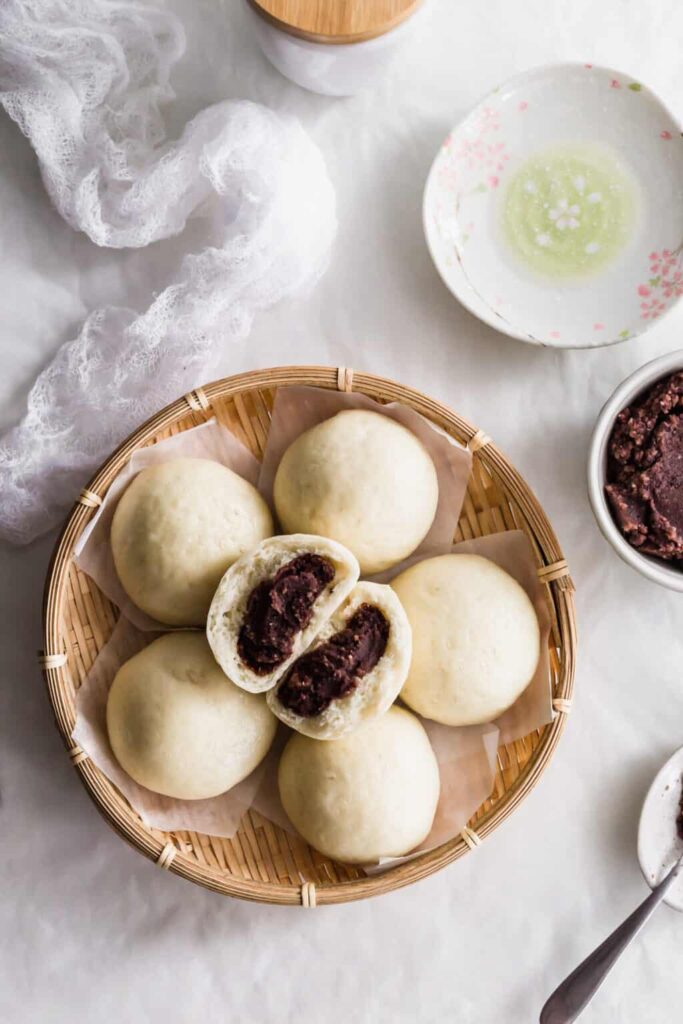
5. Red Bean Bun
Red bean buns are a popular Chinese dessert you’ll find at bakeries and dim sum restaurants.
The buns have a soft, fluffy exterior made from wheat flour dough. Inside is a smooth, sweet filling of mashed red beans.
To make them, you mix flour, yeast, sugar, and milk to form the dough. After letting it rise, you divide it into small pieces.
Each piece is filled with red bean paste and sealed. The buns are then steamed until they puff up and become tender.
You can enjoy red bean buns warm or at room temperature. They make a tasty snack or light dessert with tea.
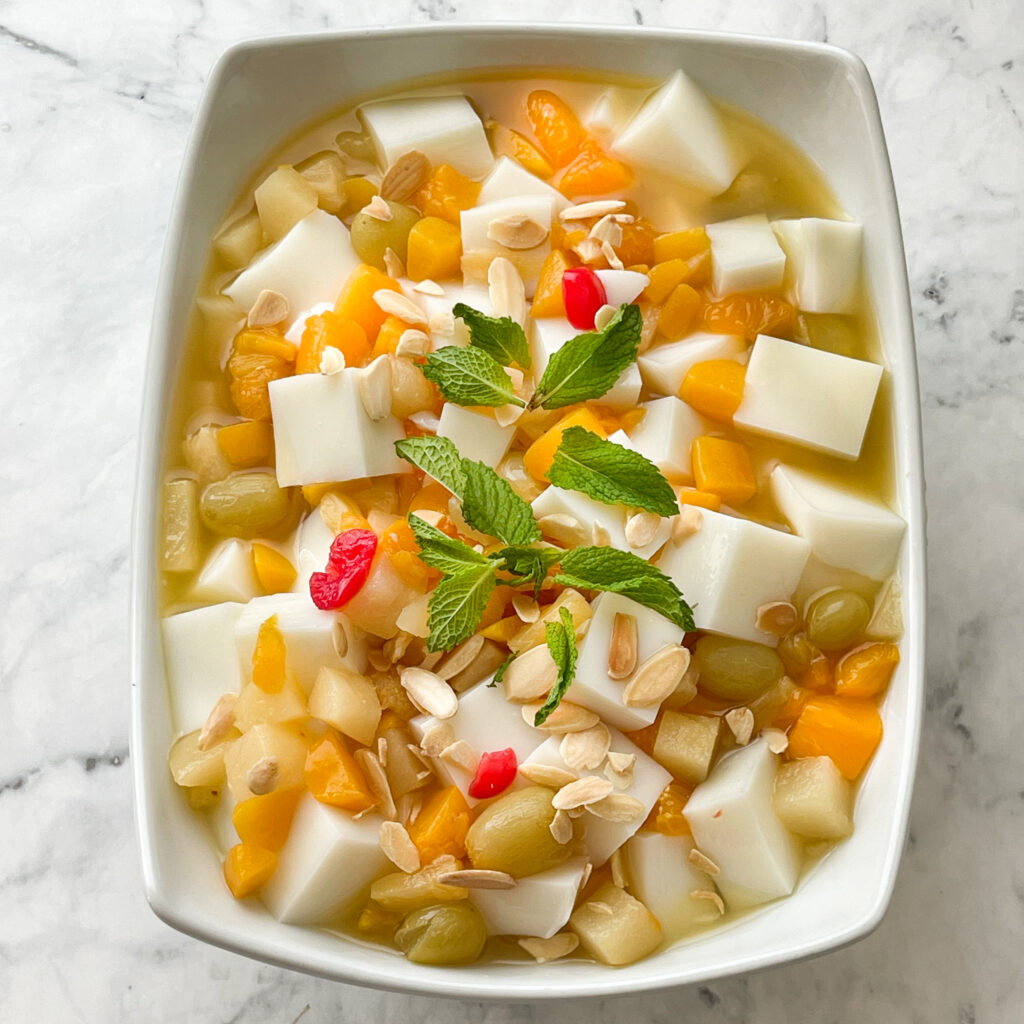
6. Almond Jelly
Almond jelly is a light and refreshing Chinese dessert. You’ll love its smooth texture and delicate almond flavor.
To make it, you mix almond milk, sugar, and agar powder in a saucepan. Heat the mixture until it boils, then add almond extract for extra flavor.
Pour the liquid into molds and let it cool. Once set, the jelly has a soft, wobbly consistency.
Serve almond jelly with fruit cocktail or lychees on top. The sweet syrup from canned fruit complements the mild almond taste perfectly.
This dessert is easy to make at home. It’s a great choice after a heavy meal or on a hot day.
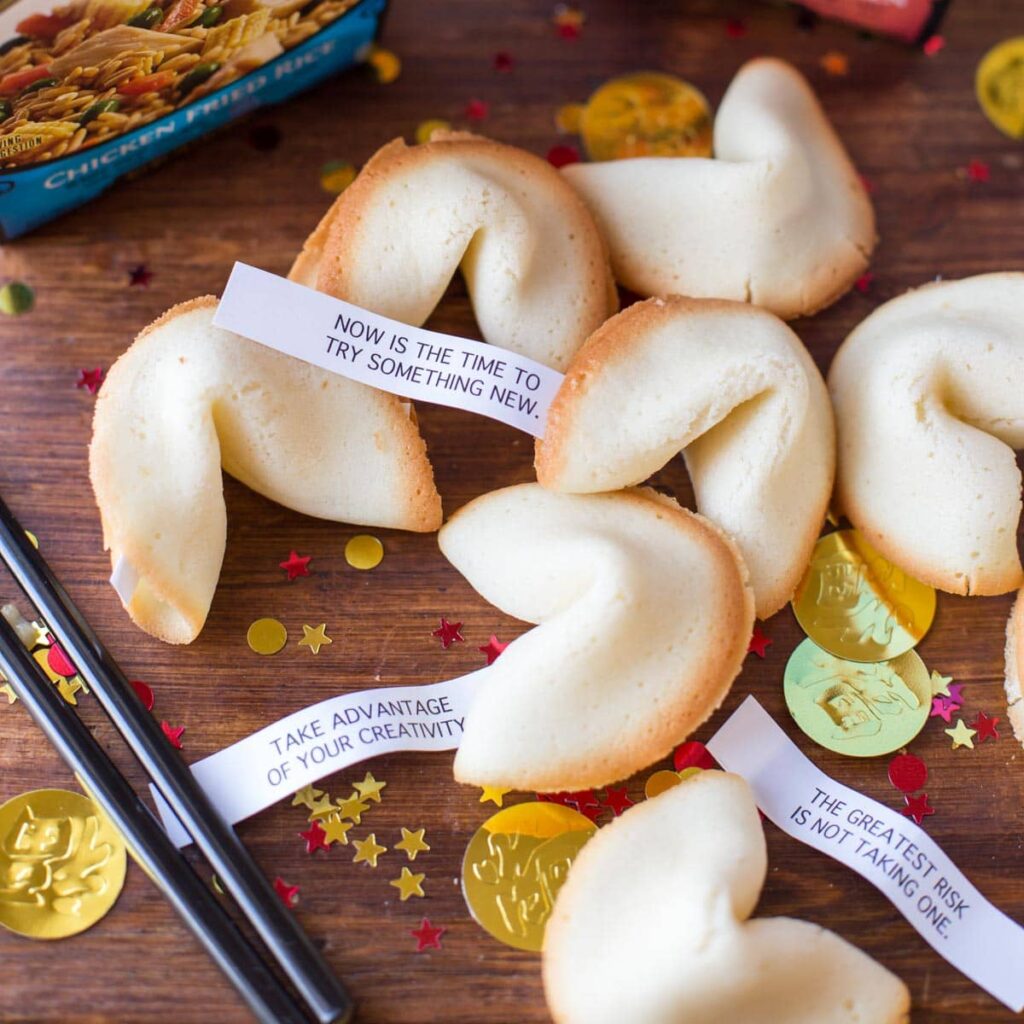
7. Fortune Cookies
Fortune cookies are a popular treat often served at the end of Chinese meals in America. These crispy, sweet cookies contain small slips of paper with messages inside.
You might be surprised to learn that fortune cookies aren’t actually Chinese. They were invented in California, likely by Japanese immigrants.
The cookies are made from flour, sugar, vanilla, and other ingredients. They’re baked flat, then quickly folded while still hot to create their distinctive shape.
When you crack open a fortune cookie, you’ll find a small piece of paper with a “fortune” printed on it. These messages can be predictions, advice, or sometimes just fun sayings.
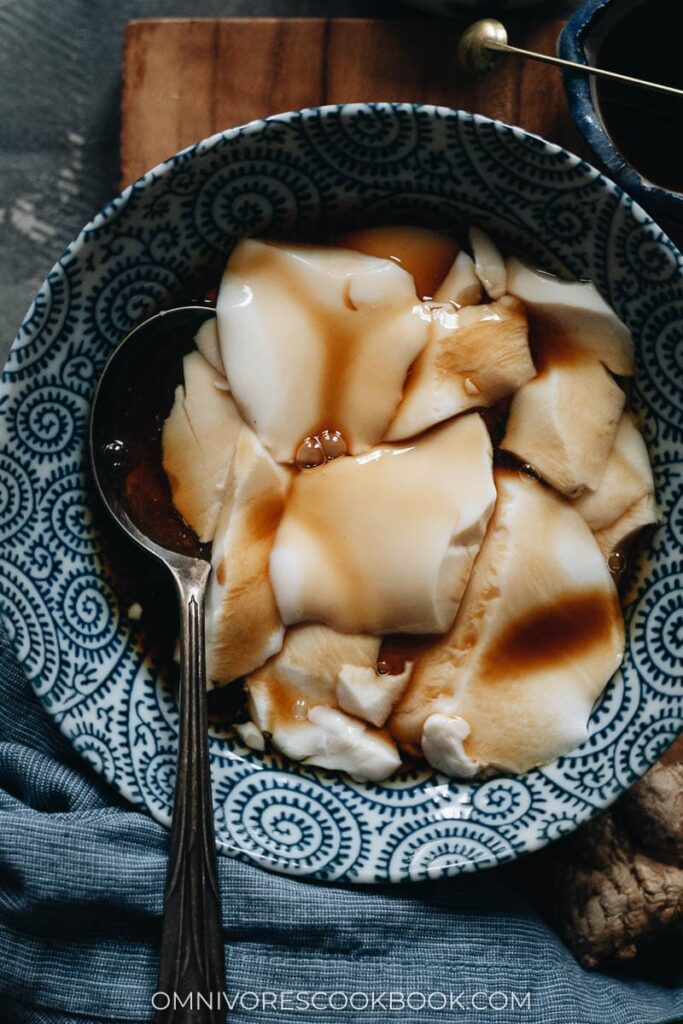
8. Douhua (Tofu Pudding)
Douhua is a beloved Chinese dessert made from silky smooth tofu. You’ll find this sweet treat served warm or chilled, depending on your preference.
The pudding has a delicate texture that melts in your mouth. It’s often topped with a clear, sweet ginger syrup or palm sugar syrup for added flavor.
You can easily make douhua at home with just a few ingredients. The main component is soy milk, which is combined with a coagulant to create the soft, custard-like consistency.
Enjoy this classic dessert as a light and refreshing end to your meal. You can also find douhua served as a popular street food in many Chinese cities.
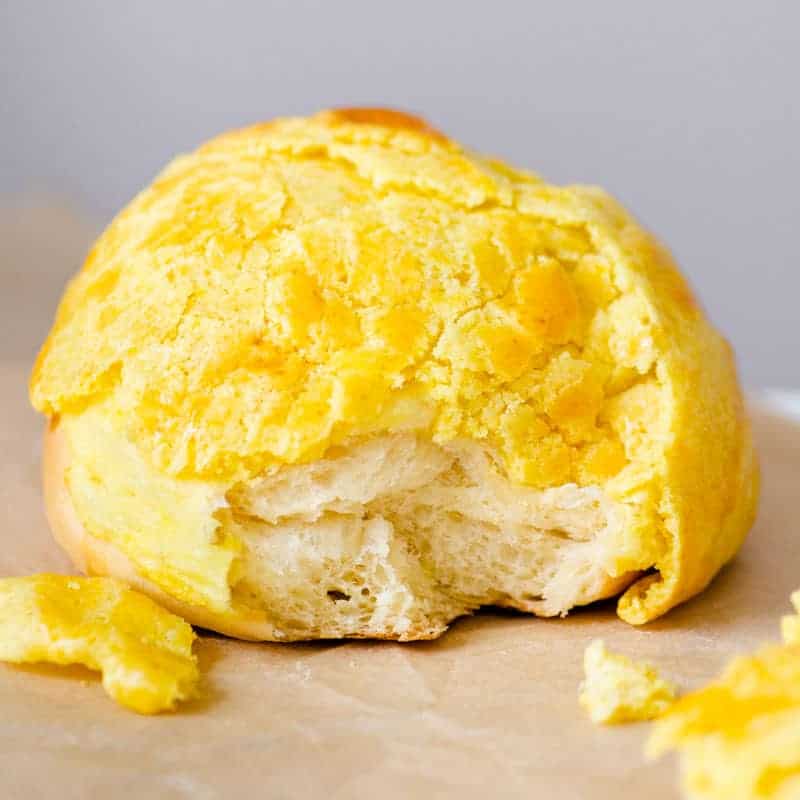
9. Pineapple Bun
Pineapple buns are a beloved Chinese bakery treat. Despite the name, these buns don’t contain any pineapple. They get their name from the crackly top that resembles a pineapple’s texture.
You’ll find a soft, fluffy bread base with a sweet, crispy topping. The contrast between the textures makes these buns irresistible.
To make pineapple buns, you start with a basic sweet bread dough. While it rises, you prepare the topping with butter, sugar, and flour. After shaping the buns, you add the topping and bake until golden.
These buns taste best when fresh and warm. You can enjoy them plain or with a pat of butter inside for extra richness.
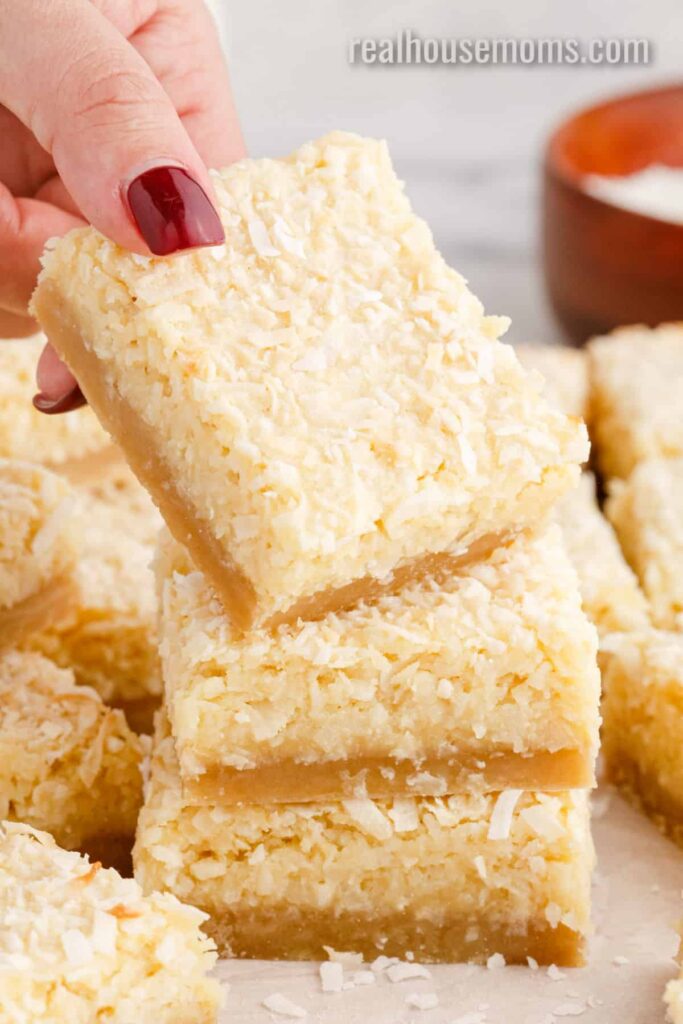
10. Coconut Bar
Coconut bars are a sweet treat popular in Chinese dessert cuisine. You’ll find these chewy, coconut-filled delights in many bakeries and cafes.
The bars have a crisp, golden exterior and a soft, moist interior. They’re made with shredded coconut, eggs, flour, and sugar.
You can enjoy coconut bars on their own or pair them with tea or coffee. They make a great snack or light dessert option.
Some versions add extra flavors like vanilla or almond extract. Others include nuts or dried fruit for added texture and taste.
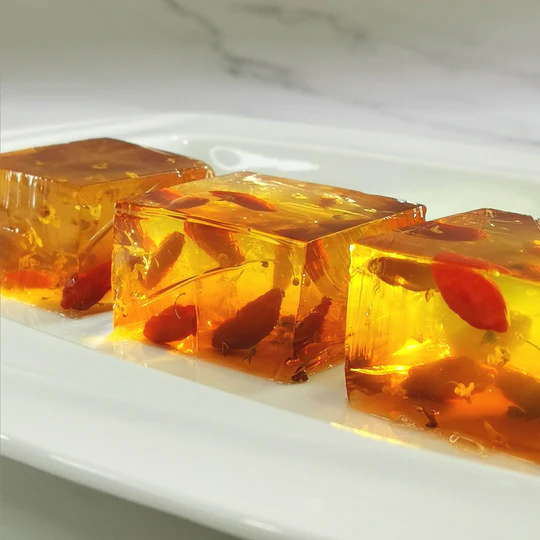
11. Osmanthus Jelly
Osmanthus jelly is a popular Chinese dessert known for its delicate flavor and pretty appearance. You’ll love its light, refreshing taste and wobbly texture.
This jelly is made with dried osmanthus flowers, which give it a sweet, floral aroma. The flowers are steeped in hot water to make a fragrant tea.
To create the jelly, you’ll mix the osmanthus tea with sugar and gelatin. Some recipes also add goji berries for extra color and flavor.
When it’s ready, you’ll see a translucent golden jelly dotted with tiny flowers. It’s often served chilled, making it perfect for warm days.
You can find osmanthus jelly at many dim sum restaurants. It’s also easy to make at home with just a few ingredients.
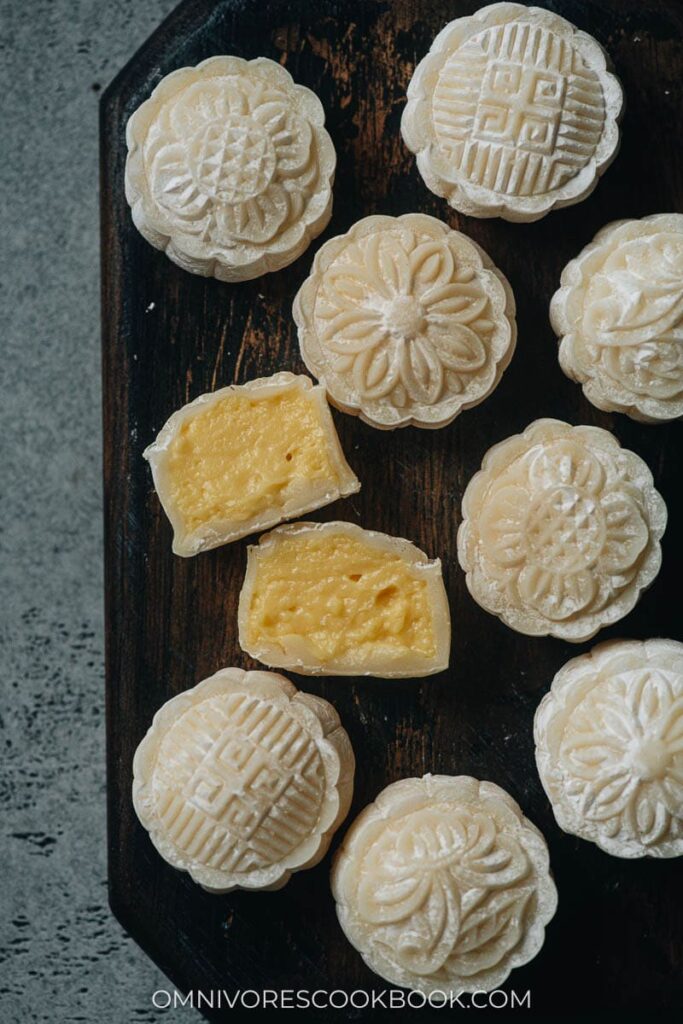
12. Snow Skin Mooncake
Snow skin mooncakes are a popular Chinese dessert. Unlike traditional mooncakes, they’re not baked. Instead, they’re made with a soft, chewy outer layer.
The skin is made from glutinous rice flour, rice flour, and wheat starch. You mix these with sugar, milk, and oil. Then you steam the mixture until it’s solid.
For the filling, you have many options. Common choices include red bean paste, lotus seed paste, or fruit flavors. Some recipes use palm sugar and grated coconut for a unique taste.
To make snow skin mooncakes, you wrap the filling in the cooled skin dough. Then you press it into a mold to create the final shape. These treats are often served chilled.
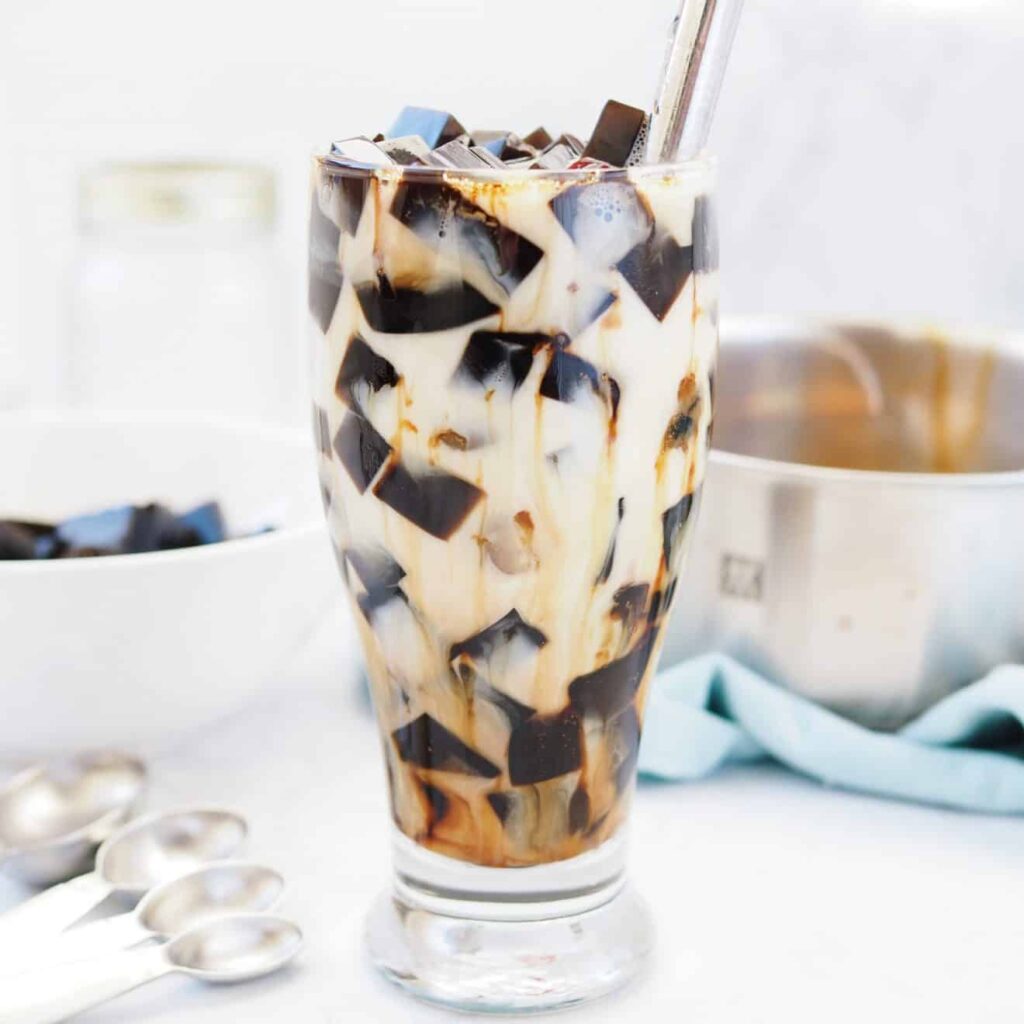
13. Grass Jelly
Grass jelly is a cooling Chinese dessert made from the leaves of the mesona chinensis plant. You’ll find it in cube or strip form, with a dark color and slightly bitter taste.
To make grass jelly, you can use dried leaves or powder. Mix with water and sugar, then boil and let it set. Some recipes add baking soda for a firmer texture.
You can enjoy grass jelly on its own or as part of other desserts. Try it with milk, syrup, or fruit for added sweetness. It’s also great in bubble tea or served with ice cream.
Grass jelly is popular in hot weather due to its refreshing qualities. You can easily find it pre-made in Asian grocery stores if you don’t want to make it from scratch.
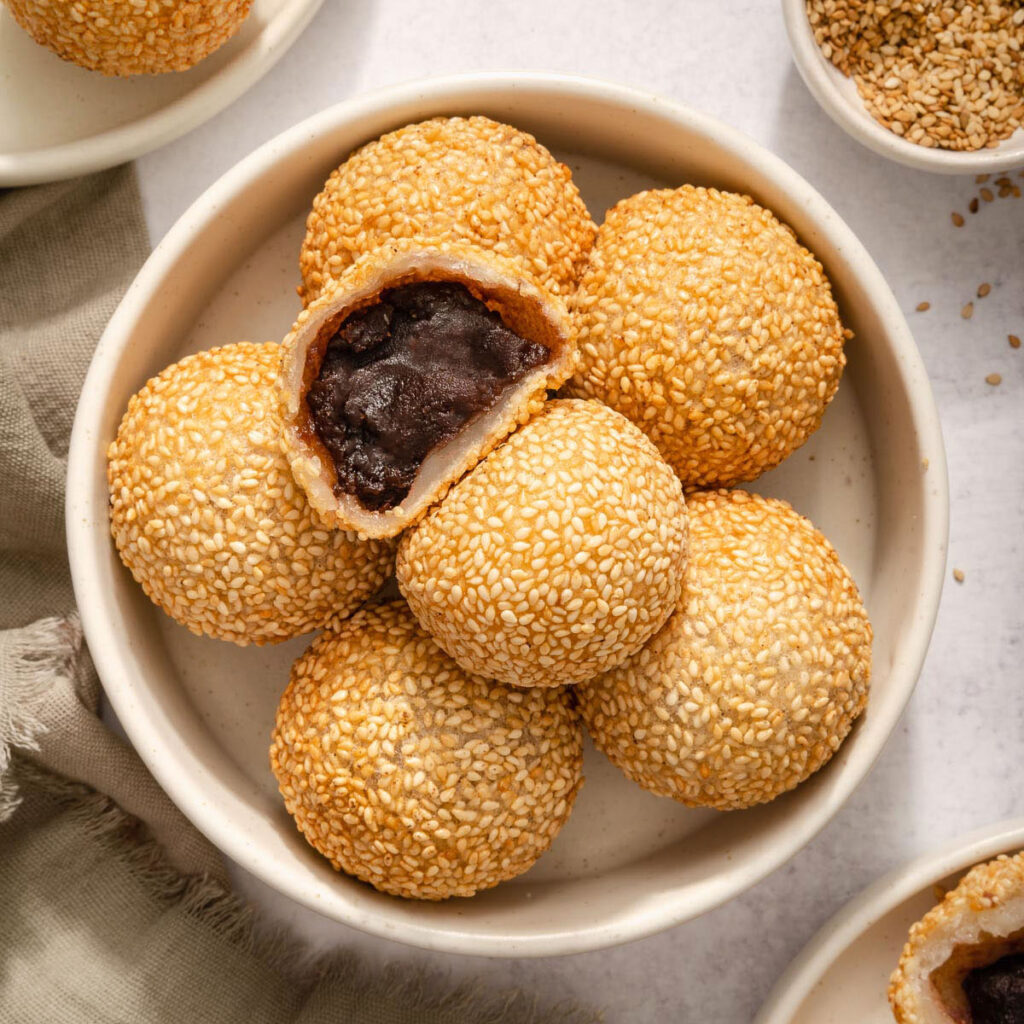
14. Sesame Balls
Sesame balls are a beloved Chinese dessert with a crispy exterior and chewy inside. You’ll find these treats at many celebrations and dim sum restaurants.
To make sesame balls, you start with a dough of glutinous rice flour, sugar, and water. You form the dough into small balls and fill them with sweet red bean paste.
Next, you coat the balls in sesame seeds. This gives them their signature look and taste. You then deep fry the balls until they’re golden brown and puffy.
When you bite into a sesame ball, you’ll enjoy the contrast between the crunchy outside and soft, sweet filling. These treats are best served warm for the perfect texture and flavor.
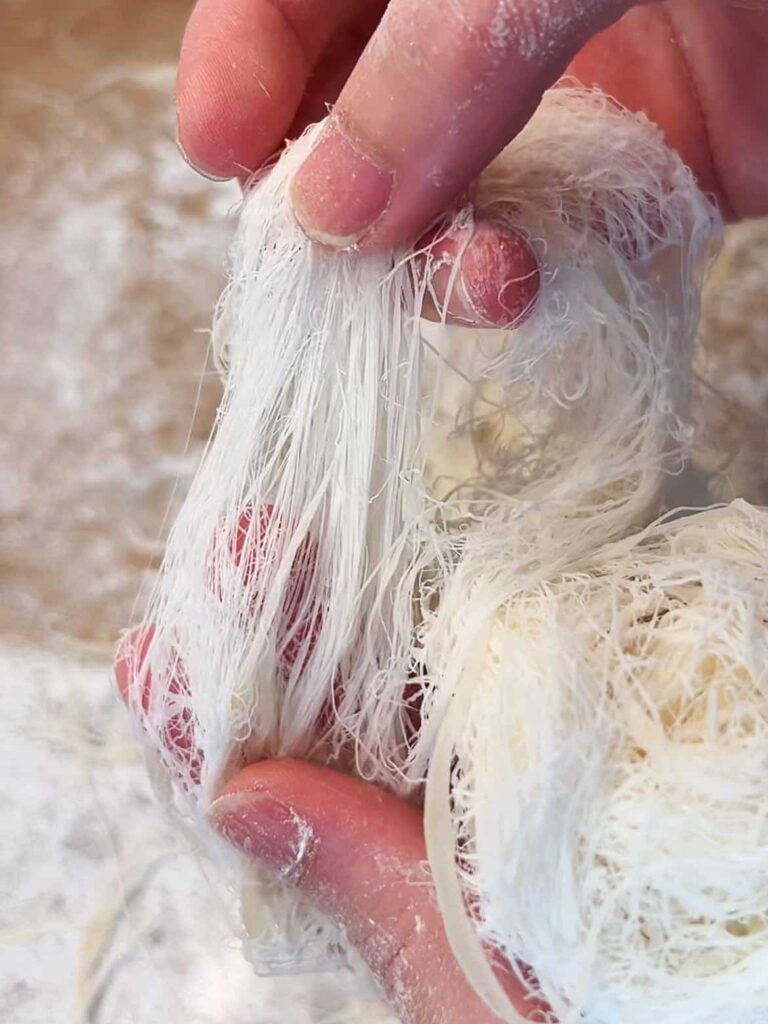
15. Dragon’s Beard Candy
Dragon’s Beard Candy is a traditional Chinese sweet that looks like fine white threads. You might think it’s similar to cotton candy, but it’s actually made differently.
To make it, skilled candy makers stretch and pull maltose syrup until it forms thousands of thin strands. These strands are then wrapped around a filling of crushed peanuts or sesame seeds.
When you eat Dragon’s Beard Candy, it melts in your mouth quickly. The name comes from its appearance, which resembles a dragon’s whiskers.
You can often find this candy at Chinese festivals and celebrations. It’s a special treat that takes a lot of skill to make.
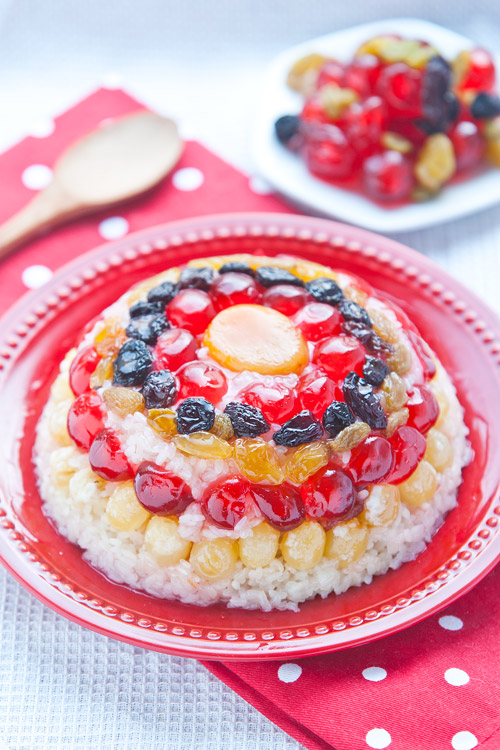
16. Eight Treasures Rice
Eight Treasures Rice is a beloved Chinese dessert made with glutinous rice and a mix of sweet ingredients.
The dish gets its name from the eight toppings used. These often include dried fruits, nuts, and candied treats.
To make it, you steam sticky rice until tender. Then you layer it with red bean paste and the chosen toppings.
The final step is steaming everything together. This creates a sweet, colorful pudding-like dessert.
Eight Treasures Rice is popular during Lunar New Year celebrations. It’s seen as a symbol of good luck and prosperity.
You can enjoy this treat warm or at room temperature. It’s a tasty way to end a meal or celebrate a special occasion.
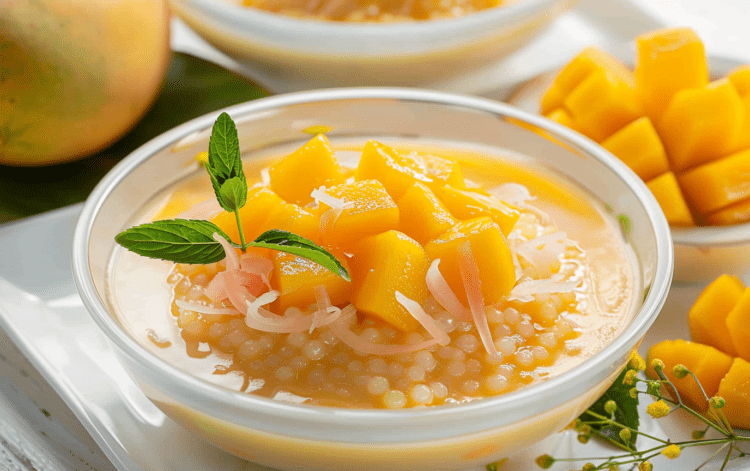
17. Yang Zhi Gan Lu
Yang Zhi Gan Lu is a refreshing Hong Kong-style dessert perfect for hot days. It combines sweet mango, tart pomelo, chewy sago pearls, and creamy coconut milk.
The name means “dropping manna from a willow branch” in Chinese. This dessert aims to give you a cooling, refreshed feeling when you eat it.
To make Yang Zhi Gan Lu, you cook small tapioca pearls called sago until clear. Then you mix them with mango puree, pomelo segments, and coconut milk.
You can enjoy this treat cold as a dessert soup or slightly frozen as a slushy drink. The contrasting textures and flavors make it a satisfying end to any meal.
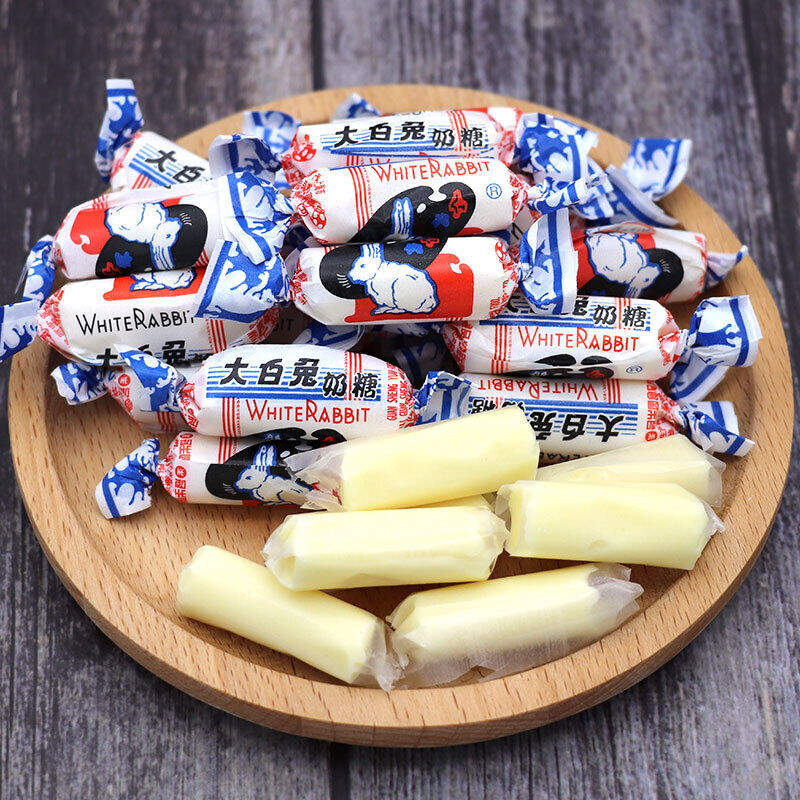
18. White Rabbit Candy
White Rabbit Candy is a beloved Chinese treat you’ll find in many countries. These small, rectangular candies have a soft, chewy texture similar to taffy.
The candy itself is made from milk and has a creamy, sweet flavor that many people enjoy.
Each piece is about 3 cm long and 1 cm wide. After the rice paper, there’s an outer waxed paper wrapper with the White Rabbit logo.
White Rabbit Candy has been around for decades. It’s popular not just in China, but in many other countries too. You can often find it in Asian grocery stores or online.
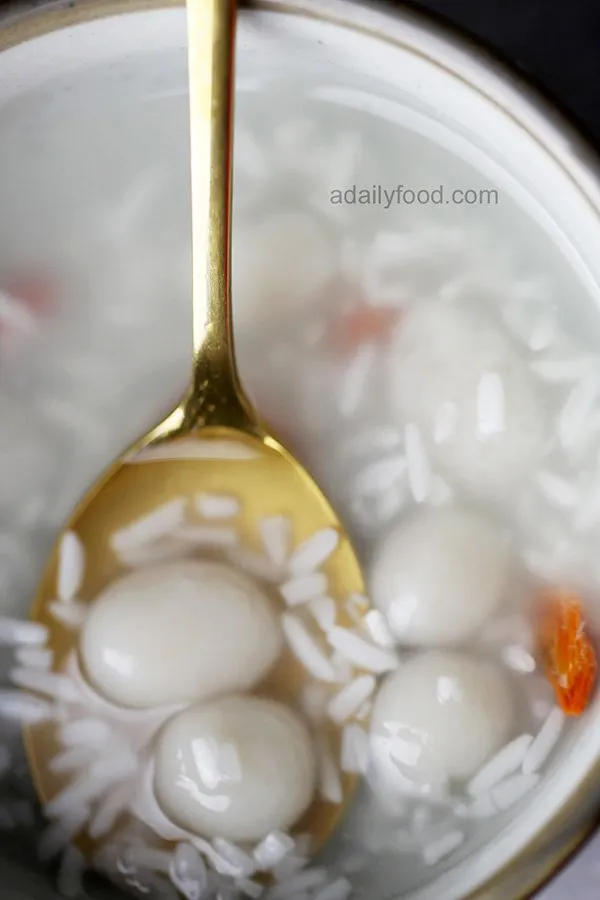
19. Sweet Fermented Rice Soup
Sweet fermented rice soup is a beloved Chinese dessert made with glutinous rice that’s fermented using special yeast. This creates a slightly tangy, sweet flavor.
The soup often includes small rice balls called tang yuan. These chewy balls add texture and fun to each spoonful.
Some recipes add red dates and brown sugar for extra sweetness. The soup is typically served warm, making it perfect for chilly days.
You can enjoy this dessert on its own or as part of a larger meal. Its unique taste comes from the fermentation process, which gives it a subtle alcoholic note.
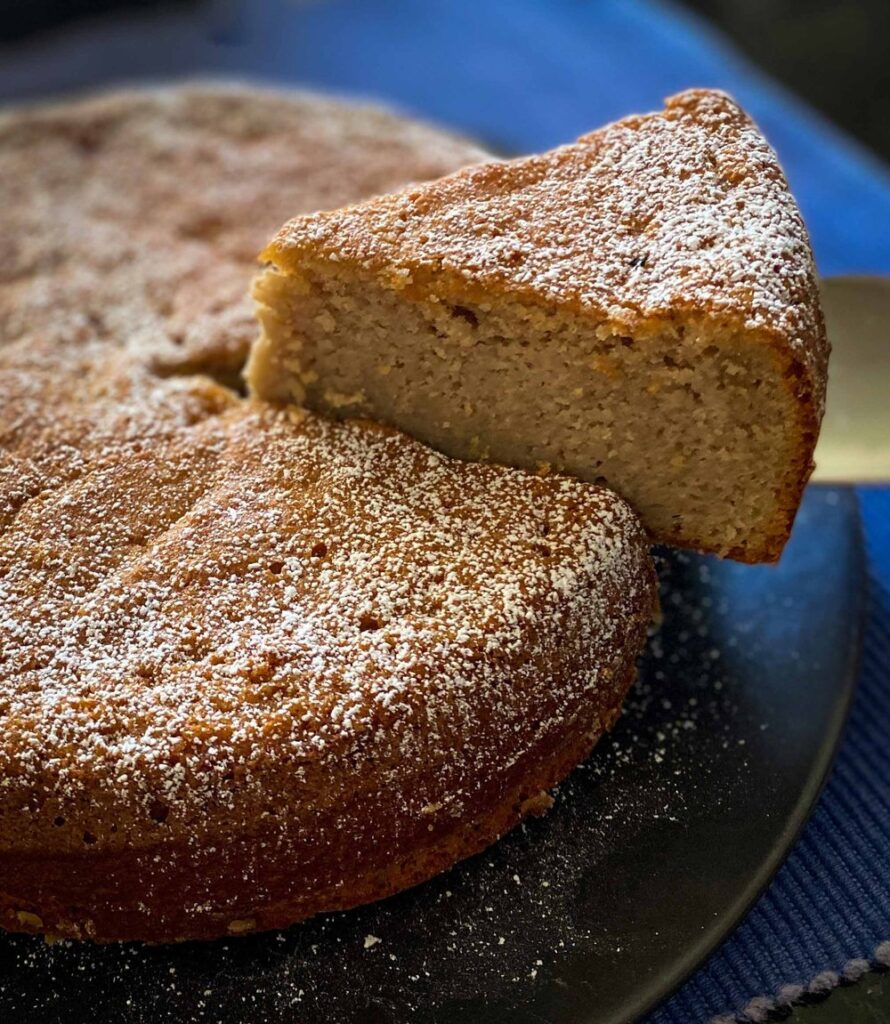
20. Chestnut Cake
Chestnut cake is a popular Chinese dessert, especially during Lunar New Year celebrations. You’ll find it’s made with water chestnuts, not regular chestnuts.
The cake has a clear, jelly-like texture and a subtle sweetness. To make it, you’ll need water chestnut flour, sugar, and fresh water chestnuts.
First, you mix the flour with water. Then, you cook sugar in water until it dissolves. You add chopped water chestnuts to this syrup.
Finally, you combine everything and steam the mixture. The result is a translucent cake with visible bits of water chestnut inside.
You can enjoy this refreshing dessert on its own or as part of a dim sum spread.
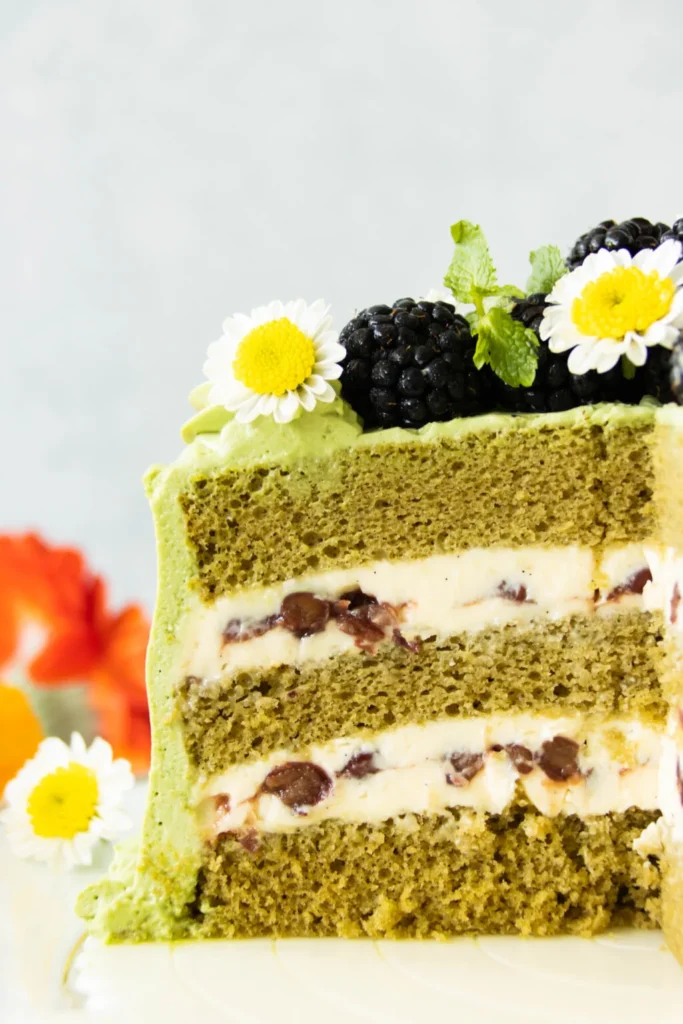
21. Matcha Red Bean Cake
Matcha red bean cake blends Japanese and Chinese flavors for a unique dessert. You’ll find layers of soft matcha sponge cake filled with sweet red bean paste.
The cake’s green tea flavor comes from matcha powder mixed into the batter. This gives it a subtle earthiness that pairs well with the red beans.
Fluffy whipped cream often joins the red bean filling between cake layers. Some versions add chewy mochi pieces for extra texture.
The combination of matcha and red bean creates a perfect balance of bitter and sweet. You can enjoy this cake as an after-dinner treat or with afternoon tea.
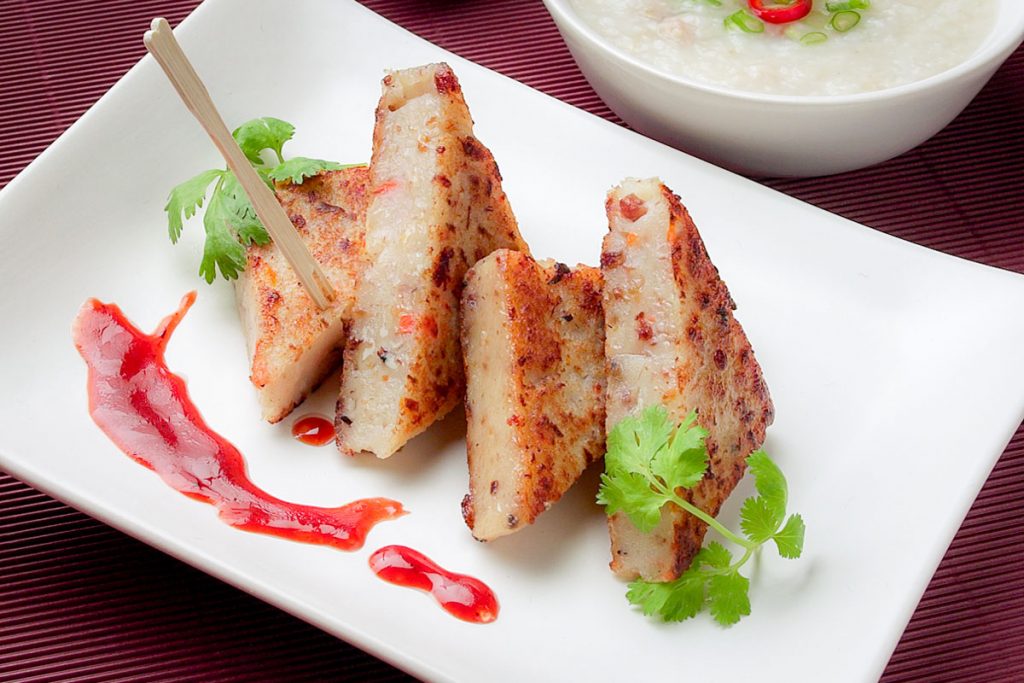
22. Taro Cake
Taro cake is a tasty Chinese treat you’ll often find at dim sum restaurants. It’s made from grated taro root mixed with rice flour and other ingredients.
The mixture is steamed until firm, then cut into squares and pan-fried until crispy on the outside. This gives it a nice contrast of textures.
You might see taro cake called “wu tao gou” in Cantonese. It has a mild, slightly sweet flavor from the taro. Some recipes add bits of Chinese sausage or dried shrimp for extra flavor.
Taro cake is popular for breakfast or as a snack. You can find it year-round, but it’s especially common during Chinese New Year celebrations.
History Of Chinese Desserts
Chinese desserts have a rich history spanning thousands of years. They reflect cultural traditions and have evolved through different dynasties.
Cultural Significance
Chinese desserts play a big role in celebrations and festivals. You’ll often see sweet treats at weddings, birthdays, and holidays. Many desserts have symbolic meanings. For example, round foods represent family unity. Sticky rice balls stand for togetherness. Some sweets are thought to bring good luck or long life.
Sweet foods are also part of traditional Chinese medicine. People believe certain desserts can improve health and balance the body. Ginger soup might help with digestion. Black sesame treats could prevent gray hair.
Evolution Through Dynasties
Chinese desserts changed over time as new ingredients and methods were discovered. In ancient times, people used honey and fruits to make sweets.
During the Tang Dynasty (618-907 AD), sugar became more common. This led to new types of candies and pastries.
The Song Dynasty (960-1279 AD) saw the rise of steamed desserts. Cooks created delicate sweets like egg custards. In the Ming Dynasty (1368-1644 AD), foreign influences brought new flavors. Chefs started using milk in some recipes.
Today, you can find both traditional and modern Chinese desserts. Old favorites like mooncakes are still popular. But new creations mix Chinese and Western styles.
Ingredients Commonly Used
Chinese desserts use a variety of sweet and unique ingredients. These create distinct flavors and textures that set them apart from Western treats.
Traditional Sweeteners
Chinese desserts often rely on natural sweeteners. Red bean paste is a popular filling made from adzuki beans and sugar. It has a smooth, thick texture and mild sweetness.
Rock sugar adds a subtle sweetness to many recipes. Honey is used in cakes and pastries for its rich flavor. Dates give desserts a caramel-like taste. Some treats use fruit like lychee or mango for natural sweetness. Osmanthus syrup made from fragrant flowers adds a floral sweetness.
These traditional options create less sugary desserts compared to Western sweets.
Unique Flavors And Textures
Chinese desserts feature ingredients that create special textures. Glutinous rice flour makes chewy mochi-like treats. Agar agar, a seaweed extract, creates firm jelly desserts. Egg whites whipped with sugar form light, fluffy meringues.
Lotus seeds add a nutty crunch to many sweets. Black sesame paste gives a rich, roasted flavor. Coconut milk creates creamy textures in puddings and jellies. Ginkgo nuts add a soft bite to sweet soups. Red dates bring a chewy texture to cakes and candies.
These ingredients combine to make desserts with complex textures and subtle flavors.
Modern Interpretations
Chinese desserts are evolving with innovative twists on traditional favorites. New fusion creations blend Eastern and Western flavors, while classic recipes get updated for today’s tastes.
Fusion Cuisine Trends
Chefs in Shanghai are mixing Chinese and Western dessert styles. You’ll find egg tarts with matcha green tea filling or red bean paste.
Flaky scallion pancakes now come with sweet fillings like Nutella or custard. Bakeries offer croissants stuffed with taro or black sesame paste.
Ice cream shops blend Eastern flavors like lychee or durian into Western-style frozen treats. Food trucks sell “bubble waffles” – crispy egg waffles rolled into cones and filled with ice cream and toppings.
Reinvented Classics
Traditional Chinese sweets are getting modern makeovers. Mooncakes now come in flavors like coffee, chocolate, or cheese.
Sweet red bean buns are being made with colorful natural dyes from fruits and vegetables. Sesame balls are filled with trendy ingredients like salted egg yolk custard.
Rice cakes are formed into cute shapes and decorated with edible flowers. Even simple classics like sweet soups are dressed up with artistic presentations and premium toppings.
These updates make old favorites appeal to younger generations while preserving cultural heritage.